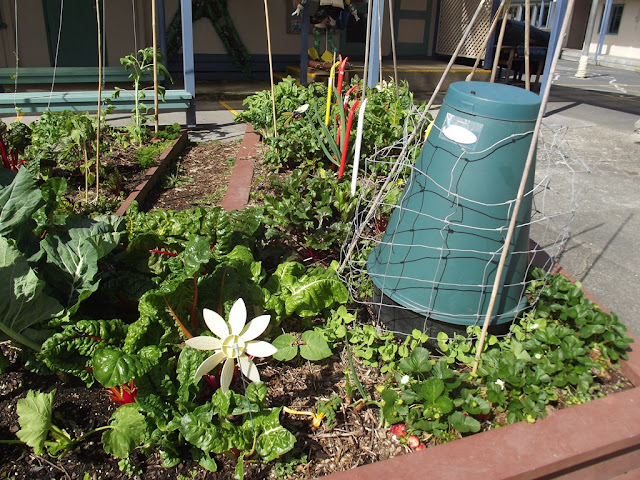National Bee Week - August 20-24.
Our bees have survived a wet winter and they are enjoying the longer, sunnier days (in between downpours!)
We have had to feed them a sugary solution throughout winter to keep them healthy and happy and we are all looking forward to the first spring flowers. We are quite an organic school and we do not use sprays so the flowers should be ok for our bees. We already have several of our fruit trees coming into blossom and they are loving the lavender!
We always have to be keeping an eye on the hive for the dreaded varroa mite, Denny the Caretaker and local bee man Johnny Boots have been checking and showing the children what to watch out for. if the hive became infected, we would have to destroy the hive :-(.
The National Beekeepers’ Association is helping battle the varroa mite but they want New Zealanders to help combat the threat to bees from pesticides and a lack of food.
"Without bees, two thirds of our everyday food would disappear, our gardens would be without many of their plants and flowers, and our major agri-export industries - worth around $5 billion - would be in severe trouble," a statement from NBA says.
* If you see a swarm of bees contact a beekeeper (visit www.nba.org.nz)
* Avoid using sprays and coated seeds containing neonicotinoids
* If you must spray, avoid products which contain acetamprid, imidacloprid, thiacloprid and thiamethoxam
* Avoid spraying chemicals in your garden while plants are flowering.
Source: The National Beekeepers' Association of New Zealand.
“New Zealanders also need to plant bee friendly trees and plants like fruit trees and old-fashioned or heirloom flowers and herbs. We also need to protect swarms, not kill them. If you see a swarm of bees in a tree or on your house contact a local beekeeper to come and get them.”

















































